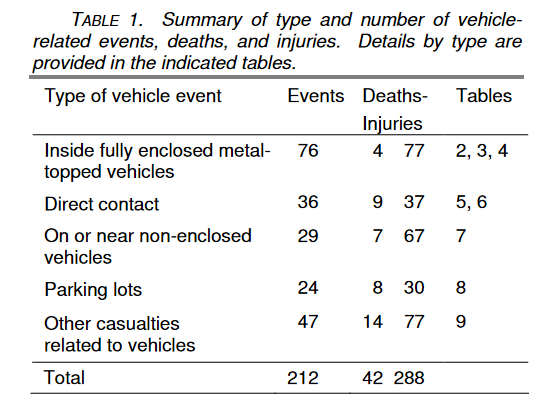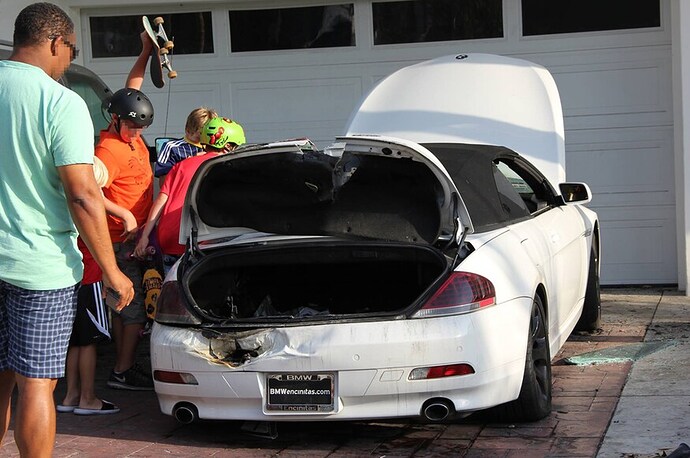Statistics on lightning strikes on cars are, naturally, hard to find.
The best (best being 5 minutes on Google) I could find was a paper presented by Ronald Holle “LIGHTNING-CAUSED DEATHS AND INJURIES IN THE VICINITY OF VEHICLES”

These represent a period 1991-1994, US data gathered by NOAA. Now, it might not record all the possible incidents, as I suspect most go unreported, or unobserved.
Now a non-enclosed vehicle is anything without aroof, such as a bulldozer, someone standing in the back of a truck, a TV cameraman on the roof of a vehicle, a soldier on a AFV, pushing a wheelbarrow, operating a golf cart, someone pouring cement from a mixer. Of the incidents listed, only 1 includes “an open top recreational vehicle”.
We can’t use these stats to conclude 0.95% of vehicle strikes involve a convertible. We really need to get into strikes per incident, or rate per car journey. Tintops, on average, are used a lot more, and are used all year round. Convertibles are used used less frequently, often not used all year round, are less likely to be used in adverse weather, so its possible that a convertible is more at risk of being hit by lightning that a tin top. Or not.
But we could infer that probably these incidents, overall, are quite rare. The various TV show demonstrations can be shown to be red herrings, in that cars can be damaged, in quite dramatic ways, by lightning, and its quite possible a strike might write the car off (eg random gouges and burns through several panels).
We might also infer, with care, the chances of injury. Crudely, if you are in a convertible, and are hit by lightning, you have a 19.6% chance of being killed. That compare to 4.9% in a tintop. And it seems that you are twice as likely to be injured in a convertible. But this is from a small sampling, and “non-enclosed” has a broad meaning, though materially, sitting at the controls of a bulldozer isn’t so different as being in a MX5. Also, Table 6 goes into some detail for tin top cases, and clearly, not everyone was actually in the car when hit. Notably, several deaths while attempting to close windows.
http://lightningsafety.com/nlsi_pls/lightning-caused-deaths-around-vehicles.pdf



 .
. Seriously I would think that the lightning would travel to earth through the least resistive route which is the car (metal) bodywork. Perhaps another argument for not replacing the “lightning conductor” standard aerial with a stubby one
Seriously I would think that the lightning would travel to earth through the least resistive route which is the car (metal) bodywork. Perhaps another argument for not replacing the “lightning conductor” standard aerial with a stubby one  What about fibreglass cars? Are they thought to be extra hazardous in a lightning storm?
What about fibreglass cars? Are they thought to be extra hazardous in a lightning storm?

